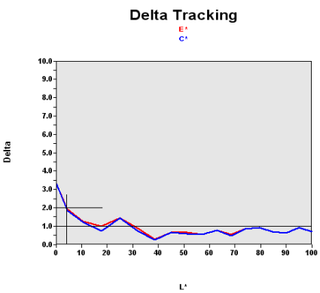The Good, the Bad and the Beautiful: 17" LCDs Reviewed
X-Black Or X-Bright?
The X-Black technology is supposed to give the Sony panel exceptional color rendering. In fact, calibration of the SDM-HS74P shows the following:

As you can see, the Sony SDM-HS74P was incapable of displaying the darkest shades correctly. 70% of the colors were extremely faithful, but the darkest 5% were rendered with a DeltaE above 2. That's a shame. The calibration was done at the following point:
| White spot | Black spot | Contrast |
|---|---|---|
| 284.7 | 0.82 | 346:1 |
284.7 cd/m² is much too bright. The screen was blinding. The brightness necessary to get the above values is just not usable in practice. And what's more, the black level was ridiculous. So we adjusted the backlighting to a lower level:
| White spot | Black spot | Contrast |
|---|---|---|
| 170 | 0.5 | 340:1 |
The luminance is a little weak, but the black level drops to values that are acceptable - though not equal to what the better monitors we tested can do. The Sony SDM-HS74P, like its predecessor, had a real problem with darker colors, and that's hard to understand in a monitor in this price range. So finally, what's the real added value of the X-Black technology? It might be better to call it "X-Bright," since what the sensor records is extraordinary luminance - also visible to the naked eye - and a very poor black level. On the other hand, in practice the eye applies its own dynamic to the image. If the white is too white, the black will seem blacker. In the end, the advantage of the X-Black technology is very subjective, and only holds true at high luminance.
As was visible in the preceding example, the contrast was stable at different backlighting levels. Our other sensor confirms this:

Contrast was very stable over the entire backlighting adjustment range.
Stay on the Cutting Edge
Join the experts who read Tom's Hardware for the inside track on enthusiast PC tech news — and have for over 25 years. We'll send breaking news and in-depth reviews of CPUs, GPUs, AI, maker hardware and more straight to your inbox.
Most Popular

